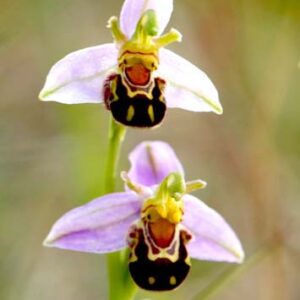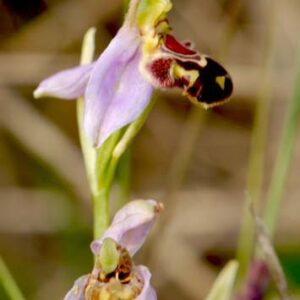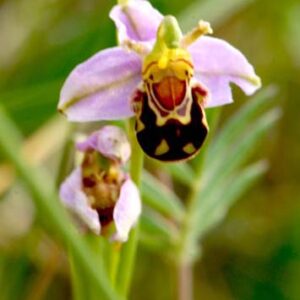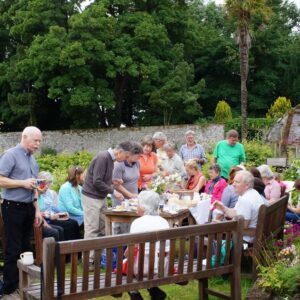Although widespread, orchids are not commonplace and to look at them growing in the wild is one of the great pleasures of the plant world. The Burren in Co. Clare, Bull Island in Dublin and The Raven in Wexford are three easily accessible locations where one may find orchids with ease and there are many other lesser-known spots throughout the country where they can be enjoyed.


A friend brought me to a population of the Bee Orchid on the sand dunes in Tramore earlier this summer and also to a location in the Comeragh Mountains where Marsh Orchids grew in profusion. Without him I would not have known of these locations and it was a great thrill to see them, a true delight. On a more domestic front, good chance and kind friends expanded the selection of orchids we have growing in the garden and it is wonderful to be able to look at the amazing structures of the flowers and intricate detail of the colours and patterns.

So, while still very much a novice, I have become enthralled by orchids, our natives and those hardy enough to be grown in the open garden. I must confess that I find many of the tropical orchids just a little too gaudy for my tastes but one is never too old to develop a new interest but I hope my days will pass without my feeling any such inclination.
On several of my outings this year I was very fortunate to be in the company of a friend who was familiar with the populations of the sites we visited so he was good enough to point out the distinguishing features of each orchid we encountered. I have found this a very good way to begin to learn about new plants as it gives you a base number which you can confidently identify and when you next encounter an orchid your immediate question is whether it is one you already know or a new discovery for you. In this way you widen your selection gradually and confidence grows.
Three orchids from the Comeragh Mountains, Co. Waterford.
My reference book has been Ireland’s Wild Orchids – A Field Guide by Brendan Sayers and Susan Sex which lists and describes, I think, thirty five orchids we might find here in Ireland. This suits me perfectly as it is not too large a number and does not present too wide a selection to the beginner when attempting to identify the latest find. Of course, orchids do not always oblige by remaining true to form and some are inclined to interbreed and present the newcomer with a confusion of features but a new interest and a new enthusiasm propels one onwards.
Bloomsbury have recently published a new Pocket Guide to the Orchids of Britain and Ireland written by Simon Harrap, a man experienced in such guides as he has previously written Orchids of Britain and Ireland: A Field and Site Guide (2005 and 2009), Harrap’s Wild Flowers (2013), the RSPB Pocket Guide to British Birds (2007 and 2012) and Where to Watch Birds in Britain and Ireland (2003 and 2010) so I reckoned his new book was a good bet to extend my study of native orchids and I was not wrong.
This guide describes the fifty two species found in Ireland and Britain with excellent notes and guidelines to help with identification, along with notes on habitat, biology and conservation. In fact, the text is of such a standard that it raises this book well beyond that of being purely a field guide that one might use simply for identification. The descriptions are detailed and extensive and the over two hundred photographs illustrating the orchids are of an excellent standard though I have enjoyed the detail of the illustrations produced by Susan Sex in Ireland’s Wild Orchids and would have welcomed some photographs which gave more detail – a very minor quibble given the excellence of the photographs and the quality of the text.
This book will certainly satisfy my present interest in our native orchids and will, I believe, serve me well for many years to come. The flowering season is coming to an end but, with winter reading, I will be well prepared for next year!
[A Pocket Guide to the Orchids of Britain and Ireland, Simon Harrap, Bloomsbury Natural History, 2016, Paperback, 255 pages, £14.99, ISBN: 978-1-4729-2485-8]
Paddy Tobin
To find out more about the Irish Garden Plant Society visit our website or follow us on Facebook







